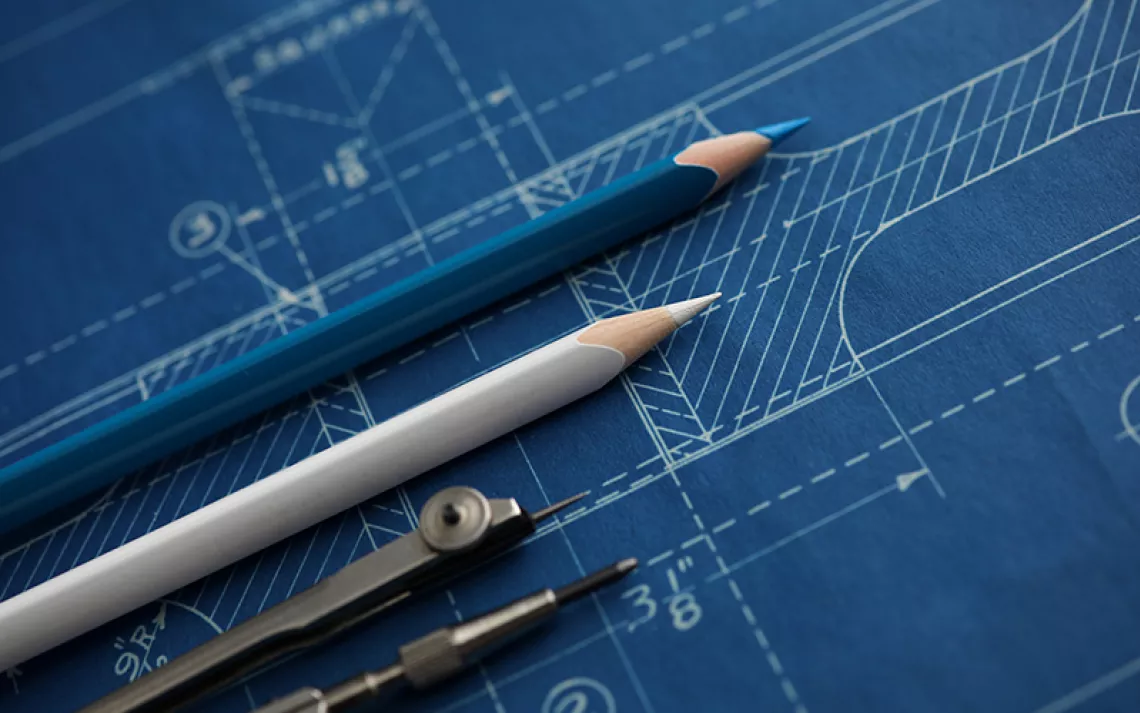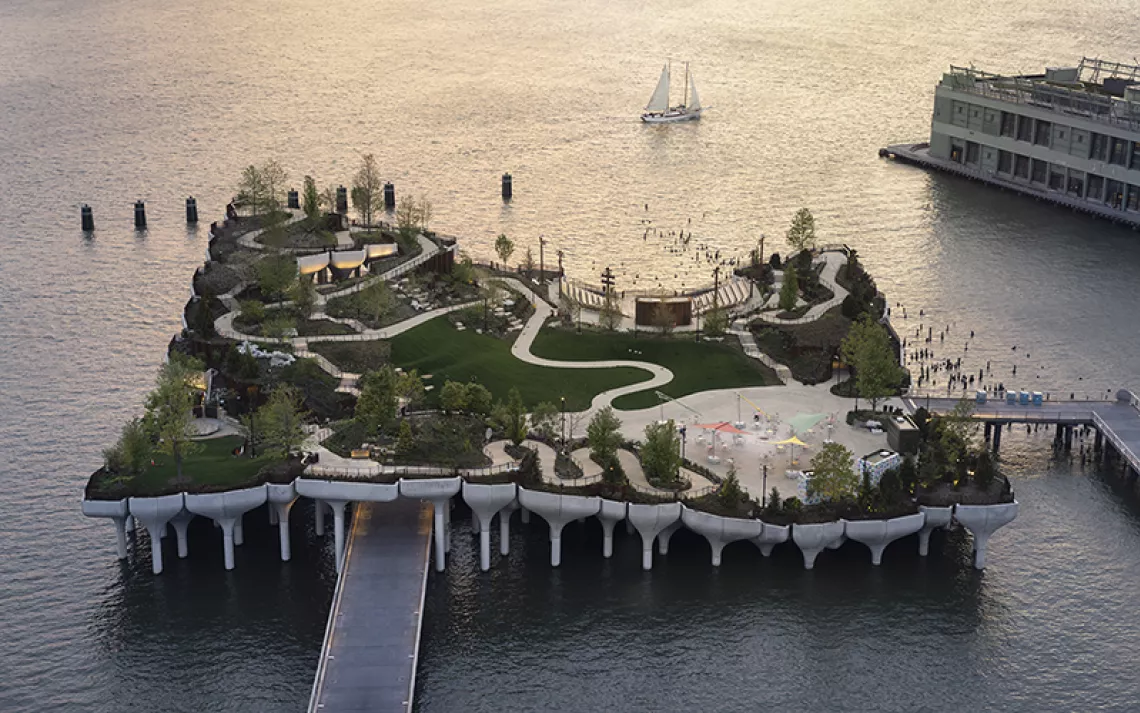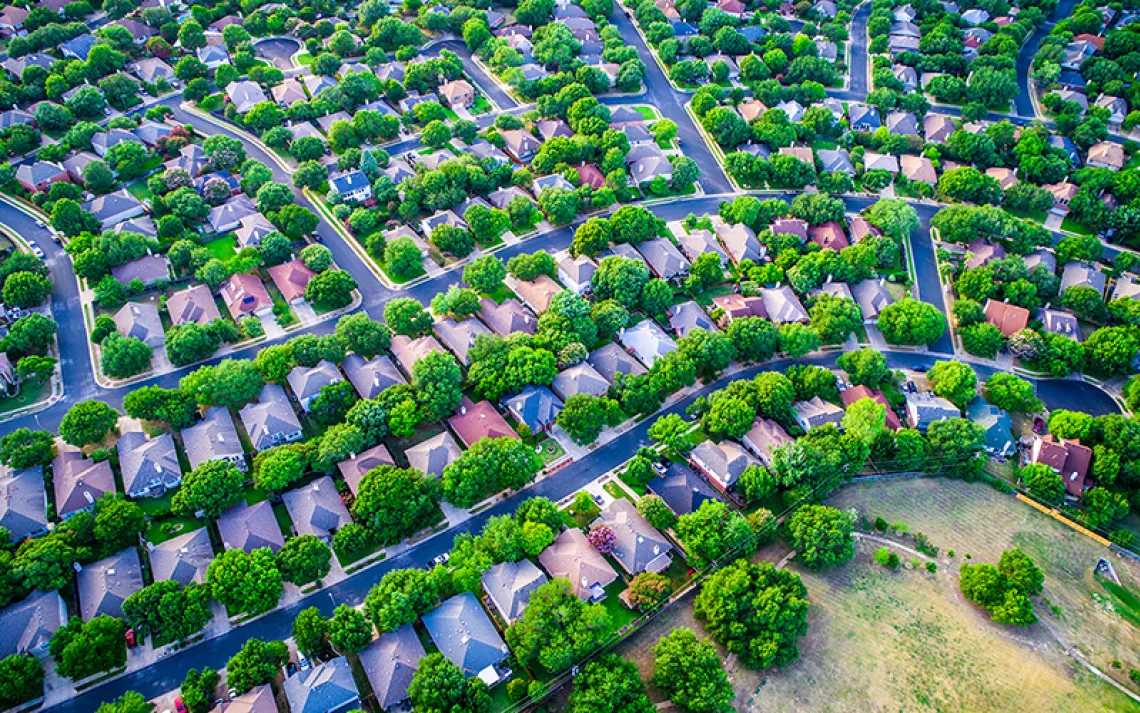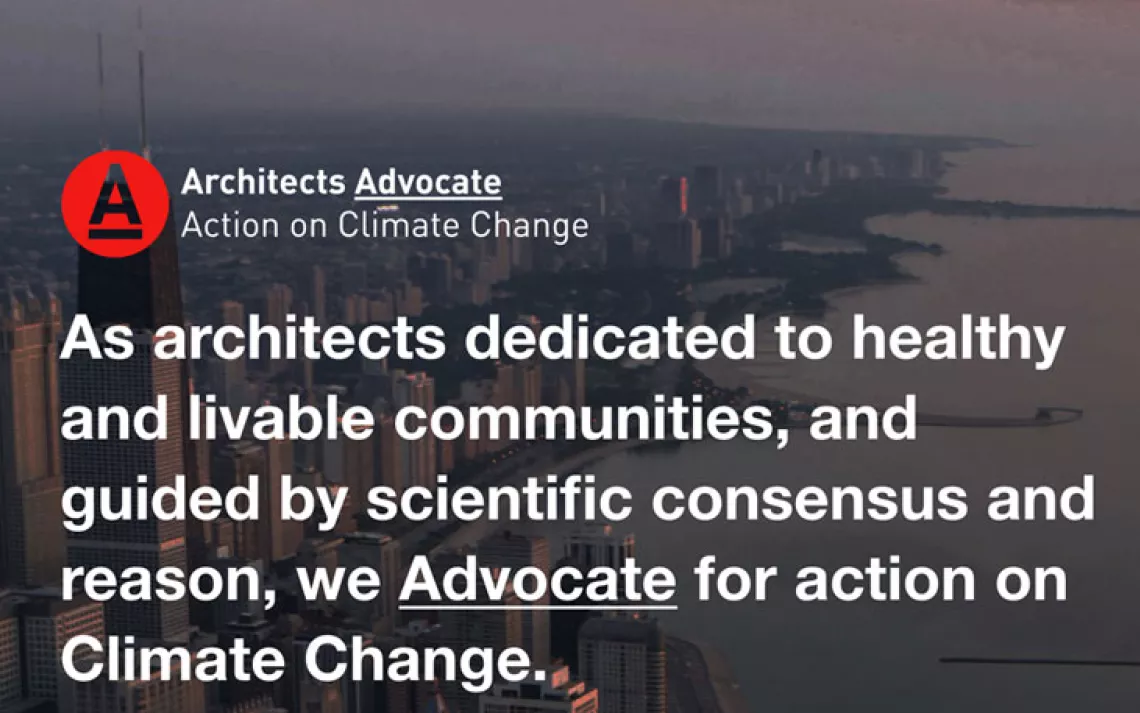Building Better: Emerald Cities
A blueprint for greener living

Illustration by Pete McArthur
For the better part of a decade, Ed Mazria was a lonely prophet.
Not long after turning 60 in 2001, the garrulous, six-foot-six-inch architect, who lives in a solar-powered house of his own design just outside Santa Fe, New Mexico, came to a dismaying conclusion about his profession: It was more responsible than any other field for global warming and the planetary woes that go with it. Cobbling together statistics from scientific, government, and industry sources, Mazria calculated that U.S. buildings are responsible for almost half the country's global greenhouse-gas emissions every year and account for about the same proportion of total energy consumption. All our cars, trucks, trains, and planes, by contrast, have a smaller impact on global warming.
By 2003, Mazria had turned his data on the relationship between architecture and climate change into a slide show. He made the case that while environmental activists demonized coal-fired power plants and gas-guzzling SUVs, it was really architects and builders who deserved to wear a scarlet letter.
There was only one problem: Nobody seemed to care. Banking on his notoriety in the small solar energy community--Mazria wrote one of the earliest and most popular tomes in the genre, 1979's Passive Solar Energy Book--he convinced Solar Today magazine to run a version of his argument. (It appeared with the headline "It's the Architecture, Stupid!") But his frustration with the slow response from his peers and the general public was palpable when I sat with him then at his dining-room table.
"If architects don't attack this," he said, the impatience in his voice rising, "the world doesn't stand a chance."
Whether the world stands a chance now, six years later, remains an open question, but for Mazria, at least, things have changed dramatically. At 67, he is a regular on the lecture circuit and in the mainstream media, having left his architecture practice to devote his attention to his nonprofit, Architecture 2030, which lays out a blueprint for making all new buildings and renovations carbon neutral by 2030.
Today the leaders of the sustainable architecture movement can no longer reasonably complain that they are not being given a hearing--not when Vanity Fair, Wired, and other mainstream magazines publish regular "green" issues or when the Sundance Channel offers environmental TV programs seven days a week.
Politicians and policymakers seem to be listening too: In the past two years, the three biggest cities in the United States--New York, Los Angeles, and Chicago--have announced programs requiring new buildings to meet basic green design standards, joining smaller cities that have already put such guidelines in place. (Seattle was the first large U.S. city to do so, in 2000.) L.A. now requires all new buildings larger than 50,000 square feet to satisfy a basic eco-checklist. Features that win points with the city include low-flow toilets, solar panels, and daylighting, which floods building interiors with natural light to reduce electricity use.
The measuring stick those cities rely on in their green building programs is the LEED ratings system, short for Leadership in Energy and Environmental Design, begun ten years ago by the U.S. Green Building Council, a nonprofit based in Washington, D.C. Versions of LEED address new construction, renovation, residential design, interiors, and even neighborhood planning. According to the council, 16,000 U.S. buildings have received or are seeking LEED certification.
Some of the world's most influential architects, having long ignored green design, are now embracing it with the zeal of the newly converted. Santa Monica's Thom Mayne, winner of the 2005 Pritzker Architecture Prize, the field's top individual honor, has made sustainability a central focus of his high-profile practice. Other well-known architects working green include Norman Foster, Renzo Piano, Richard Rogers, and the venerable firm Skidmore, Owings & Merrill.
Still, the details and larger implications of green architecture remain hazy for much of the general public. Americans have parsed the ecological differences between a Prius and a Hummer. But the gap between an efficient 2,000-square-foot house and a McMansion--or between a wasteful, glass-wrapped office tower and a geothermal-heated warehouse--remains relatively opaque.
The growing prominence of green design has also opened it up to charges that it focuses more on marketing than substance. LEED ratings have been the subject of blistering critiques from some architects who find them inflexible and the point system in need of fine-tuning, if not a complete overhaul. (Mayne has essentially called LEED useless.) Others complain that the larger sustainable architecture movement has been reduced to sales pitches. "I hate green architecture," design critic Cathleen McGuigan wrote in Newsweek recently. "I can't stand the hype, the marketing claims, the smug lists of green features that supposedly transform a garden-variety building into a structure fit for Eden." To be sure, in high-end real-estate markets, pitches for solar panels and recycled fly-ash countertops have become nearly indistinguishable from those for water views and chef's-style Viking ranges.
No matter what kind of success green architecture can achieve in the United States, it may ultimately mean very little if China, India, and other developing nations can't find a way to build more sustainably. Many of the most advanced experiments in green architecture and city planning are happening in those countries, but for every model eco-city in China, a dozen others pursue growth with a headlong, soot-covered ambition right out of Dickensian England.
Within the next decade or two, cities may begin constructing buildings that go beyond mere carbon-neutral status and--thanks to highly efficient windows, solar panels, geothermal pumps, wind turbines, and other features--actually produce more energy than they consume. But such buildings remain in the planning stages, hovering in the architectural imagination. For now, a fundamental contradiction lies at the heart of green architecture. Buildings remain, by definition, harmful to the environment, and choosing to construct one is still a decision to consume resources and tip the balance of planetary health, however modestly, in the wrong direction.
Too often that contradiction is underexposed. Imagine that a developer buys a swath of farmland or an undeveloped patch on the far suburban edge of a U.S. city, then proposes filling it with a collection of roomy single-family houses decked out with solar panels and recycled floorboards. Should environmentalists and local officials hail the houses' green features? Or should they explore the larger ecological implications of chewing up undeveloped land and producing a group of stand-alone homes with no connections to mass transit? It is in wrestling with the broader issues of land use, transit, and the scale of cities that green architects and their backers will really earn their stripes in the next decade.
Green architecture will never truly succeed as an ecological movement without setting its sights on the macro level, here and in the developing world. Instead of looking just at energy efficiency, it also needs to look at community. (The new LEED ratings for neighborhood development are a welcome start.) We need fewer green houses on half-acre parcels and more green apartment buildings that facilitate dense living near transit. More to the point, we need city planning and land-use policies that tie individual houses to a larger urban fabric. The most promising green projects are no longer stand-alone buildings; they are master plans, like the Dutch firm MVRDV's design for the Logrono Montecorvo Eco City near Rioja, Spain, which will knit 3,000 housing units into a parklike, carbon-neutral development.
In the United States, we still tend to lose sight of the fact that green design and building is more about accepting the need for compromise and efficiency--about doing more with less--than it is about adding flashy features to a house or skyscraper. But with some modest retooling, it could begin to bring Americans' lives, which have in so many ways become bloated during the boom years of the past two decades, closer to achieving real balance.
 The Magazine of The Sierra Club
The Magazine of The Sierra Club



